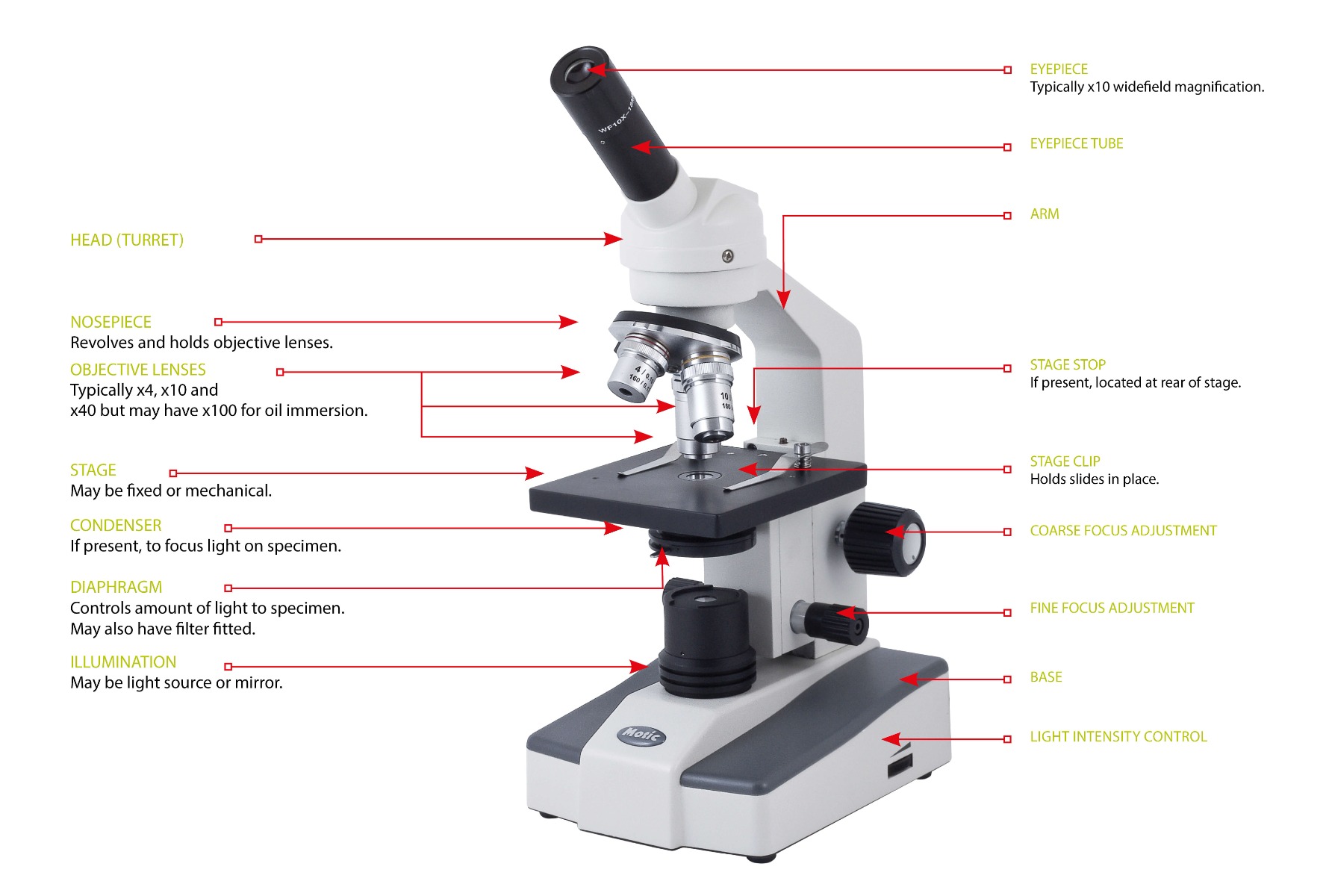

Microscopes can appear to be rather complicated pieces of equipment, but essentially, they are just a series of lenses that magnify the tiniest of images, allowing us to see right down to the cellular level.
There are two main types of microscopes used in science - the light microscope, and the electron microscope.
A light microscope uses light rays (either natural or powered) to magnify the image, whereas electron microscopes use an electron beam to magnify the sample. Electron microscopes will be found in industry, and research whereas schools will utilise light microscopes.
Here we show you a fully annotated diagram of a typical light microscope found in schools with a full glossary to help you understand how all the component parts work together to give us those amazing views into the cellular world.


Older light microscopes will feature a mirror at the base which is used to focus external light up onto the lenses. Typically, these would require a secondary light source as very often there is not enough natural daylight (or bench space near the window!) to get a strong enough beam of light. Most schools will add bench lamps when setting out mirrored light microscopes.
The newer generation of light microscopes feature built in (and often rechargeable) light sources, allowing the user to use the microscope almost anywhere. They also tend towards LED light sources which do not heat up the sample on the slide and last for a much longer time than traditional lamp bulbs.
Click here to see our full range of light microscopes
Downloadable Blank Annotated Microscope Diagram


Get your students involved and download a blank annotated microscope document they can fill in – a quick and easy way to test their knowledge!











